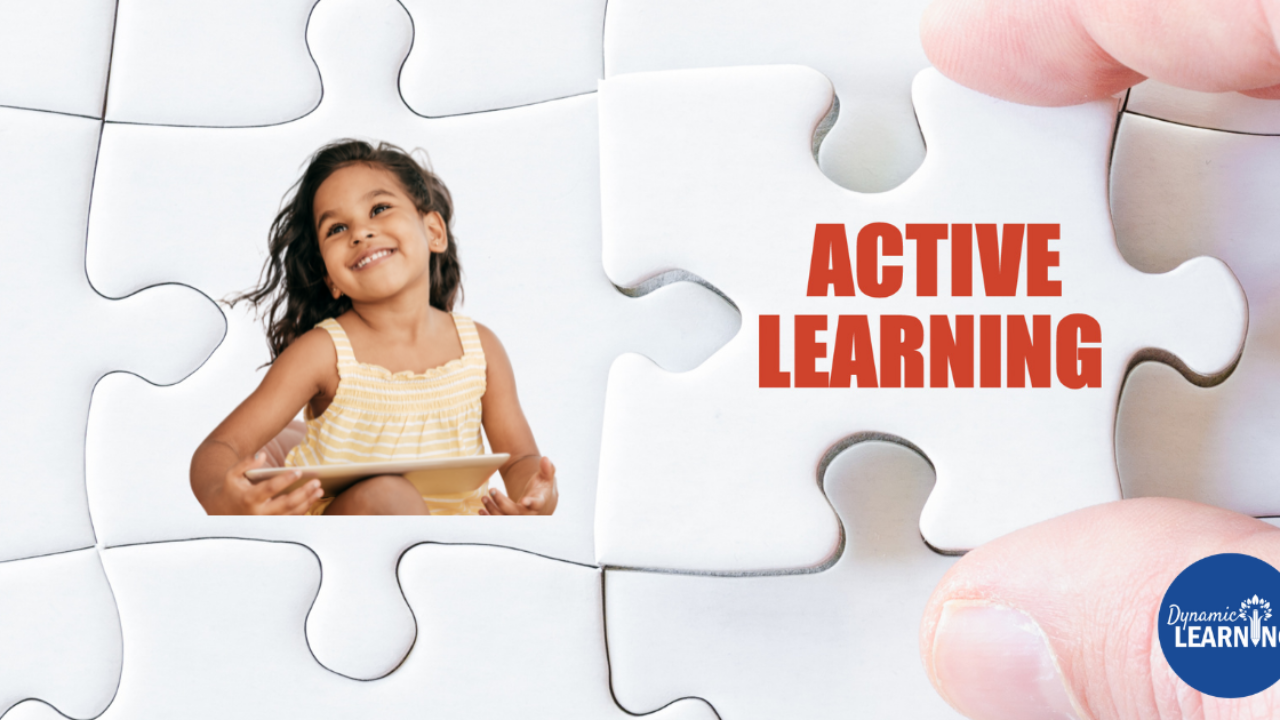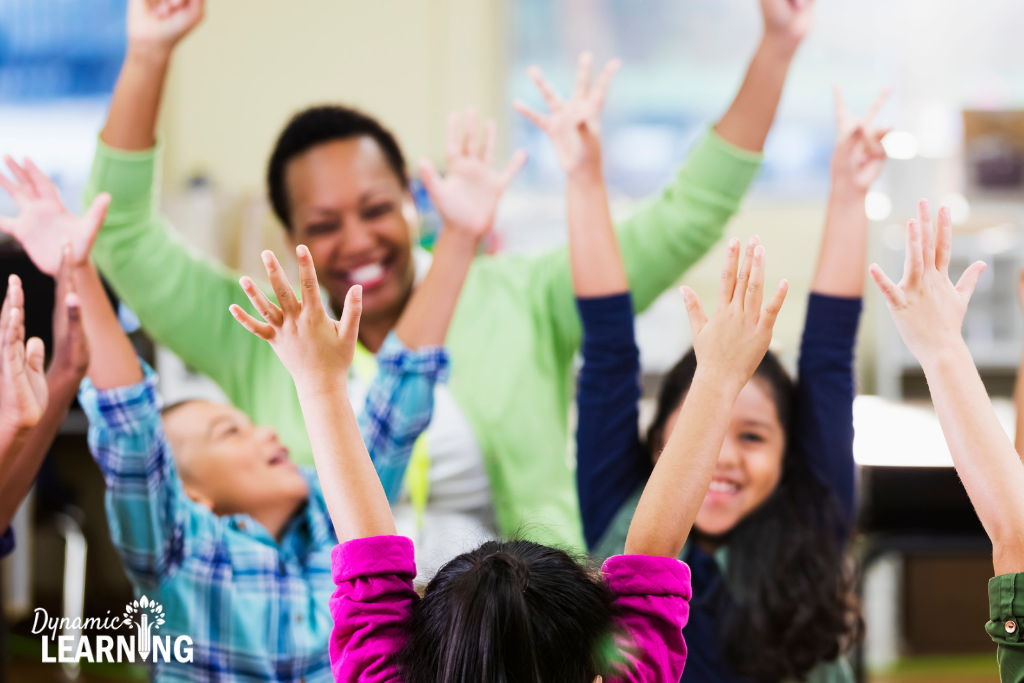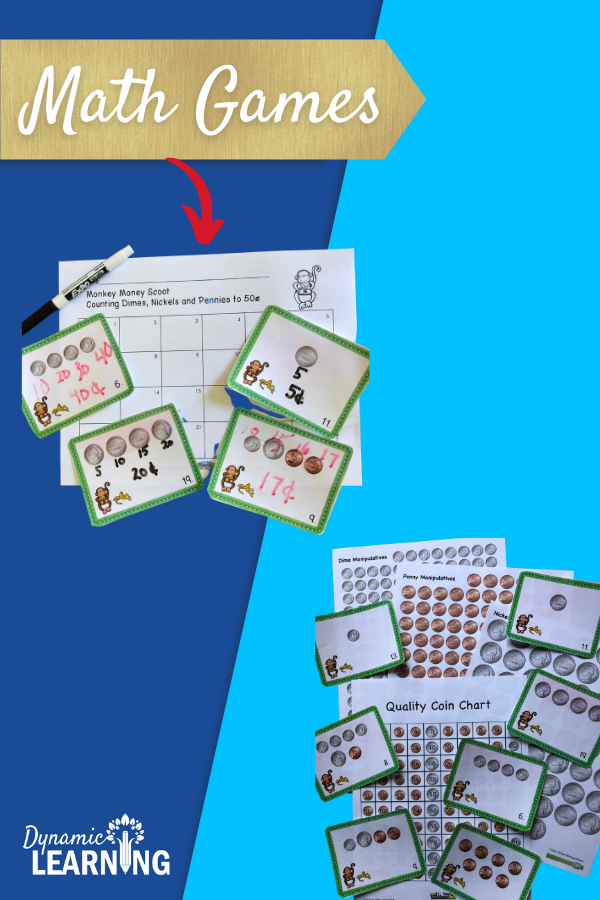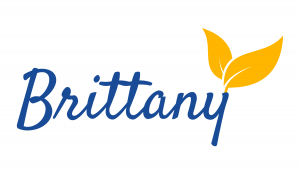How strategies for active learning lead to powerful results
Jan 09, 2022
These active learning strategies will provide powerful results for students.
Try strategies for active learning to give your classroom a boost
Hi there friend! So we’re about halfway through our year at this point and you are one of two people: either you are refreshed from your break and ready to go, or you are sitting here thinking “I have 2 more quarters of this??” Regardless of where you are, this is the perfect place to start your return to the classroom.

Are you a frustrated teacher?
How strategies for active learning lead to powerful results
If you haven’t discovered this little gem yet, active learning is a super cool way to do things with your students. CLICK HERE to read this lovely PDF about the basics of active learning. In its simplest form, strategies for active learning involve student participation. Rather than being the person in charge, the teacher takes the role of facilitator. If you’re not sure where to start, try one of these:
Have students role play their goals in the classroom
There is no better way for students to explore what they are learning than to have them act it out. Young students especially love this and it is a tremendous addition to your collection of activities for social emotional learning. Pam’s most impactful example is Positive Juan.
I did some role play in my classroom about being negative and crying, saying things like, "I don’t want to do that, It is too hard, I don’t like it” Then I showed them what being positive looked like, “I am going to do my best, I can do this” I told them that it also helped their friends when they were positive to them: like smiling at them and encouraging them when they were having a difficult time. Juan was having a difficult time at the beginning of the school year. He was crying and he didn’t want to be in school. After this time of role play, he announced that he wanted to be “Positive Juan” and do his best!
I was so happy to see him change his attitude. I loved how he actually was applying the vocabulary he had learned. This was a great example of the power of words.
Learning with math games will motivate your students differently
How many times have you had to wipe away tears when your student struggles with their math work? My heart breaks for these students that are working so hard they eventually put their heads on their desks and give up. You know they need to understand the material, but you’re not sure how to make it click.
In this article in Edutopia, Harry O’Malley states, "Game mechanics are useful in teaching math because they heighten emotion, engagement, and attention at each phase.” When your students go into shutdown mode, games are what activate them!
Games…
- boost student confidence
- encourage deeper learning
- provide more reliable results.
Check out our Active Learning Membership that provides you with all of our math games as well as language arts. You can also get our Nonfiction Reading Packs with this membership. Grab it before the price goes up!
CLICK HERE to read more about math games.

Students love math games!
Music in the classroom will give your students meaningful engagement
Why is music in the classroom so important? This Johns Hopkins study summarizes it for us. CLICK HERE to read the study. It tells us:
“Music helps us learn because it will–
establish a positive learning state
create a desired atmosphere
build a sense of anticipation
energize learning activities
change brain wave states
focus concentration
increase attention
improve memory
facilitate a multisensory learning experience
release tension
enhance imagination
align groups
develop rapport
provide inspiration and motivation
add an element of fun
accentuate theme-oriented units”
Whoa nelly! That is a lot of good reasons. Music is not just activities for social emotional learning, but also for active learning with your content area units. Imagine taking a cluster of important vocabulary words from one of your units. You create a song using those words and sing it every day of your unit. Each day you highlight a different vocabulary word. You talk about what it means, different phonics features, and how it relates to other words in the song. Your students will have a richer understanding not just of the vocabulary, but of the subject itself! Try this word cluster to get you started for the New Year: CALENDAR, ENCOURAGE, BEST. QUALITY, HABITS, RESOLUTIONS
Check out how we used these words in our Boom Reader.
BONUS active learning strategy: Have your students take the word cluster and write their own poem, song, story, or create a picture. Your tech savvy kiddos can even create something on Google Slides!
Try some movement as an active learning strategy
Search your lesson plans for areas where you can incorporate movement. Kinesthetic and tactile learners really suffer when material is only taught through sight and sound, ie: the teacher teaches or the student reads.
This fabulous article from Educational Innovation 360 mentions three awesome strategies for active learning when you are presenting your lesson content.
- Whole Brain Teaching. There are 7 main components that involve student participation, students teaching one another, and learning through movement. While some teachers find all of the steps tedious, the philosophy is sound and many rave about student engagement!
- Total Physical Response. This is my absolute favorite. It uses a number of the kinesthetic features of Whole Brain teaching and aligns directly with well-researched approaches for vocabulary instruction.
- Mnemonic Devices. These are simple connections the brain makes in order to process and retain information. Mnemonic devices paired with an active instruction method and purposeful application can be very powerful tools.
Setting classroom goals with these brilliant transitions
Raise your hand if transition times are the WORST for your young learners…yup I totally get it. So how about we use those little moments to our advantage. Here are a few transition ideas that will keep your students engaged all day:

Would You Rather?
Have your students answer a question like “would you rather have Summer all year or Winter all year?” Have them take it a little deeper by having them explain their answer. You can add a journal entry, comic book strip, or drawing to give them writing enrichment.(Idea from Teacher Karma)
What Am I?
Vocabulary: Students take a word from your word wall or a stack of vocabulary cards. Have the student speak as though they are the word.
Here is an example from Teacher Karma: I am something you do when you need to drop something off. A mailman also does this too. The word is deliver.
Math: Students will come up with a number. Give them boundaries to limit the amount of options so that their guesses aren’t way off the mark!
Example from Teacher Karma: I am a number between 17 and 44. I am an even number. I am less than 33. I am 8 plus 10. The number is 18.
Think Time
This is awesome because you can utilize it at any time during the day. Pam came up with it after the break was over and the kids were just being so loud. She said “ok, it’s think time.” This means the students have to quietly think about whatever subject she chooses. Her kiddos read their Daily Concept Builders™ books, look for the word of the day, and try to figure out the meaning on their own.
This is something you can do easily with your own reading books. Simply copy the pages and have your kiddos highlight or circle the vocabulary words. If you want something that’s reusable, laminate the copies and use dry/wet erase markers.
Another way to fill “think time” would be to present students with a hypothetical challenge or a difficult math problem. Put a piece of a blown up image on the board and see if someone can guess what it is. There are a ton of options. The only 2 rules:
- Students have to be silent
- Think time is only about 10 minutes(otherwise they get squirrely).
CLICK HERE to read all 7 transitions!
Assessment strategies for independent learning
Now while your students are applying these active learning strategies, you walk around, observe, and record. Your students are directing their learning and you are making notes about their progress. Here are the 3 basic steps:
You teach
Your role here is minimal. You may call students to the carpet or simply address them in their seats. Explain the concept using the Teach-OK method from Whole Brain Teaching. I don’t personally endorse the call-and-response “chant” nature, but the simple, engaging approach is solid. This is from their site:
“Teach-Okay is WBT’s version of Collaborative Learning. Simple as pie … speak briefly, not much more than about a minute, teaching one new idea. Now, clap twice and exclaim “Teach!” Your kids clap twice and exclaim, “Okay!”
Students turn to their neighbors, use big gestures, and paraphrase what you said. Paraphrasing, of course, is a key intellectual skill. Kids don’t truly understand lessons until they can translate what they’ve heard into their own words.
The Teacher in a student pair summarizes your lesson and makes explanatory gestures. The Student mirrors the Teacher’s gestures. Thus, it is easy to spot off-task kids … they aren’t moving!! Simply stand beside them, whisper, “Big gestures, please!”
Students teach themselves
This is where independent learners are born. The most important guidance you can provide is helping students find the best way to internalize the information. You may encourage a student by asking them whether they learn better from hearing something, seeing something, or doing something. Once your student has their answer, encourage them to work through it in a way that makes sense. The key shift here, is that you are floating rather than positioning yourself.
Assessment
There are some different ways you can officially sign off that a student has mastered a skill. Again the student must demonstrate mastery three times before you can assert that they have learned the skill:
The student becomes the teacher: Have a student teach the mastered skill to either another student who is struggling, or even a younger student. If you choose this method, make sure you space the demonstrations out. A student teaching the same thing three times in a row on the same day isn’t going to show you whether he or she understands the material.
Fun and games: Use games to assess your students. Scoot is a fun game for kids and an excellent way to assess. Your students demonstrate their knowledge of the material without the pressure of a formal test, and you still have written documentation for your records.
Check out some of our popular Scoot games for elementary data!

Have some questions about taking data? CLICK HERE to read the entire post!
Want some Winter fun? Check out this amazing digital and printable Boom and Scoot bundle for:
- Addition 1-10
- Addition 11-20
- Subtraction 1-10
- Subtraction 11-20
- and BONUS, ordering numbers 0-10!
CLICK HERE to check it out!

So that’s it friend. You have learned all about strategies for active learning from start to finish. Let us know how you are applying this in your classroom. Leave feedback in the comments below, send us an email, or join our Sing, Play, Engage FB group.
Remember to check out Active Learning and keep students engaged in their learning!
Have a great start to your new year!


